How to Initialize a Drive in Windows 11 (HDD or SSD)
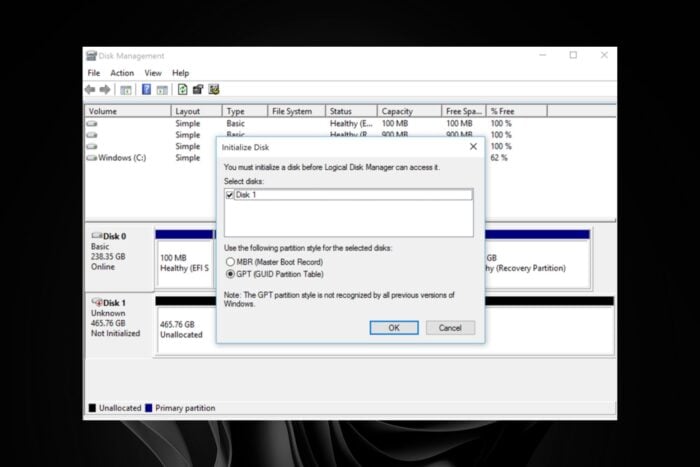
If you’re adding a new SSD or hard drive to your PC, you’ll likely need to initialize the drive in Windows 11 before you can format or use it. This process sets up the disk’s partition style (MBR or GPT) so the system can recognize and access it.
Below are the easiest and most reliable ways to initialize your disk, and no third-party tools are required.
How do you initialize a drive in Windows 11?
Table of contents
- How do you initialize a drive in Windows 11?
- 1. By using Disk Management
- 2. By using the Command Prompt
- 3. By using Windows PowerShell
- 4. By using a third-party tool
- 5. Reboot and Let Windows Auto-Detect the Drive
- 6. Use Device Manager to Refresh Disk Drivers
- 7. Enable the Drive in BIOS or UEFI Settings
- 8. Install Windows 11 Directly on the New Drive
- 9. Use Device Manager to Scan for Hardware Changes
- 10. Disconnect Other Drives Temporarily
- Should I initialize MBR or GPT?
 NOTE
NOTE
1. By using Disk Management
- Press the Windows + R keys to open the Run command. Type diskmgmt.msc in the run dialog box to launch Disk Management.
- You’ll see all connected hard drives listed when the Disk Management window opens. Look at the list, and find a drive listed as Disk 1, or Disk 10 (other names are possible, as well).
- You’ll recognize this drive because it is not initialized and is listed as Unknown, and unallocated. Right-click on it and select the Initialize Disk option.
- Right-click on that partition, and select Initialize Disk from the right-click context menu.`
`
- Once you initiate the process, it will ask you to choose between a Master Boot Record (MBR) or a GUID Partition Table (GPT). We advise you to choose a GPT. Click OK.
- Once you do this, you’ll get back to the main window, where your new drive will be listed as Basic and Online, but it will still have unallocated space.
- To fix that, right-click on the stripped box, and select New simple volume…
- Click Next, and assign a drive letter.
- Now you need to format your new drive. For the best results, choose the NTFS file system, and Perform a quick format, then hit Next.
- Finish the process.
2. By using the Command Prompt
- Press the Windows key, type cmd in the search bar and click Run as administrator.
- Type diskpart in the Command prompt window and press Enter.
- Next, type list disk and press Enter. This will list all drives on your PC.
- Type the following commands and press Enter after each one: Remember to replace X with the corresponding number matching the uninitialized hard drive:
select disk Xcleanconvert gpt
3. By using Windows PowerShell
- Press the Windows key, type Windows Powershell in the search bar and click Run as administrator.
- Type and Enter the following command.
get-disk - Your uninitialized disk should appear as RAW. Next, type the following command and hit Enter to initialize it. Remember to replace n with the actual number represented by the uninitialized disk:
initialize-disk n - The disk will be initialized in the GPT partition style by default but if you wish to use the MBR style, type in this command:
initialize-disk n –PartitionStyle MBR
4. By using a third-party tool
In all these manual talks, it’s probably time-consuming to initialize a drive on your Windows 11. Luckily, you don’t have to go through this as there are a host of partition manager software that can do the job automatically and with fewer errors.
Further, these tools can help you out with partitioning and allocating space in your drive especially if you don’t know what partition style to use or Windows fails to create a partition. However, the main advantage over these manual methods is that they don’t wipe out your data.
5. Reboot and Let Windows Auto-Detect the Drive
Windows 11 can often detect and initialize newly connected storage automatically.
Steps:
- Power off your PC completely (don’t just restart).
- Connect the new SSD or HDD firmly using proper SATA or USB cables.
- Turn the PC back on and wait 2–3 minutes.
- Open This PC or File Explorer to see if the new drive shows up.
If it doesn’t, Windows might still recognize it in Device Manager.
6. Use Device Manager to Refresh Disk Drivers
If your new drive is detected but not accessible, driver issues may be to blame.
Steps:
- Press Windows + X, then click Device Manager.
- Expand the Disk drives category.
- Right-click your new drive and choose Update driver.
- Select Search automatically for drivers.
- If that doesn’t help, uninstall the device and restart your PC to reinstall it.
In some cases, this step alone can make the system initialize the new disk.
7. Enable the Drive in BIOS or UEFI Settings
Sometimes, the drive isn’t initialized simply because it’s not active in your BIOS.
Steps:
- Restart your PC and press F2, Del, or F10 (depending on your motherboard) to enter BIOS.
- Go to the Storage Configuration or Drives tab.
- Check if your new SSD or HDD is listed.
- If the drive is disabled, enable it, then save and exit.
Windows 11 should now detect and auto-initialize the drive during boot.
8. Install Windows 11 Directly on the New Drive
If you want to use the new drive as a boot device, Windows will automatically initialize it during installation.
Steps:
- Create a Windows 11 bootable USB using the Media Creation Tool.
- Boot your PC using the USB installer.
- During setup, select the unallocated space on the new drive.
- Windows will initialize it and create the necessary partitions.
This method is ideal when installing Windows 11 on a new SSD that’s currently blank.
9. Use Device Manager to Scan for Hardware Changes
This method forces Windows to rescan all connected devices and can trigger automatic initialization.
Steps:
- Open Device Manager via the Start menu.
- Right-click your PC’s name at the top of the list.
- Select Scan for hardware changes.
- Wait for the scan to complete.
If successful, Windows will detect the uninitialized drive and prompt for setup.
10. Disconnect Other Drives Temporarily
Sometimes, too many connected drives can interfere with initialization.
Steps:
- Power down your PC and disconnect all storage drives except the one you want to initialize.
- Boot into Windows.
- Wait a few minutes to see if the OS detects and configures the single drive.
- Once initialized, you can reconnect your other drives.
This is particularly helpful when setting up multiple SSDs or cloned disks.
Should I initialize MBR or GPT?
Selecting MBR or GPT is not based on guesswork. You have to consider the OS version you’re on, the size of the drive and your PC’s BIOS mode. Also, if you plan to expand in future, you need to consider a partition table with more flexibility.
Further, MBR is used for older Windows systems and has a size limit. GPT is newer, supports a larger size limit and is more secure.
Still, if you started off with MBR, you can convert to GPT without fear of data loss. And just in case you’re unable to convert MBR to GPT, we have it covered.
Hopefully, you’re now able to initialize a drive on your Windows 11. If you can’t initialize your drive, we have a few ways you can force it. And once you’ve successfully forced it but your hard drive still won’t show up on your File Explorer, check out this article on how to make it resurface.
Finally, if all these fail, perhaps your hard drive has reached its end of life and it’s time to upgrade to a newer and faster hard drive.
That’s a wrap from us but we’d love to hear your experiences with initializing your hard drives. How easy or difficult was it? Did you use Windows built-in tools or dedicated tools? Let us know in the comment section below.
Read our disclosure page to find out how can you help Windows Report sustain the editorial team. Read more
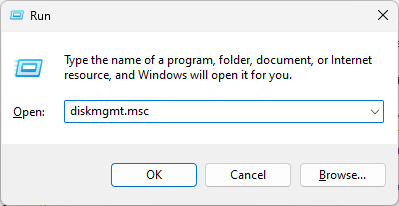
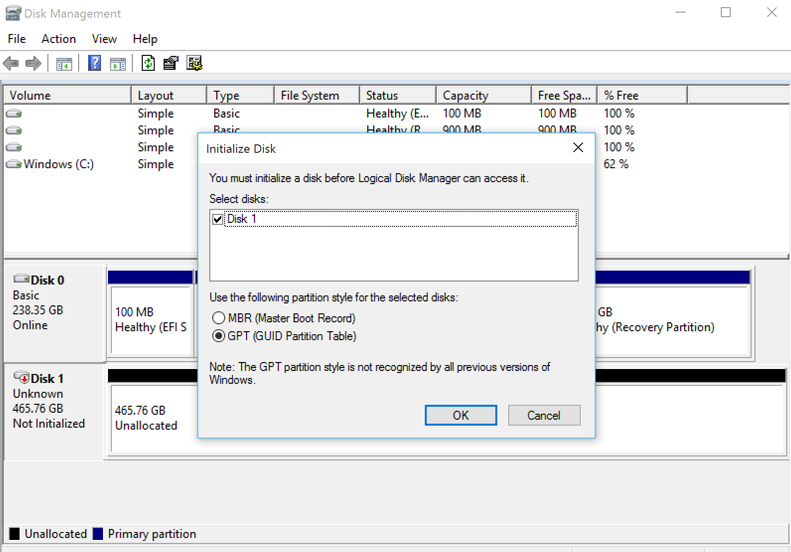

 `
`
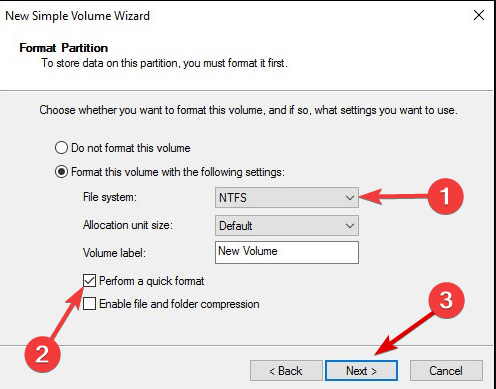
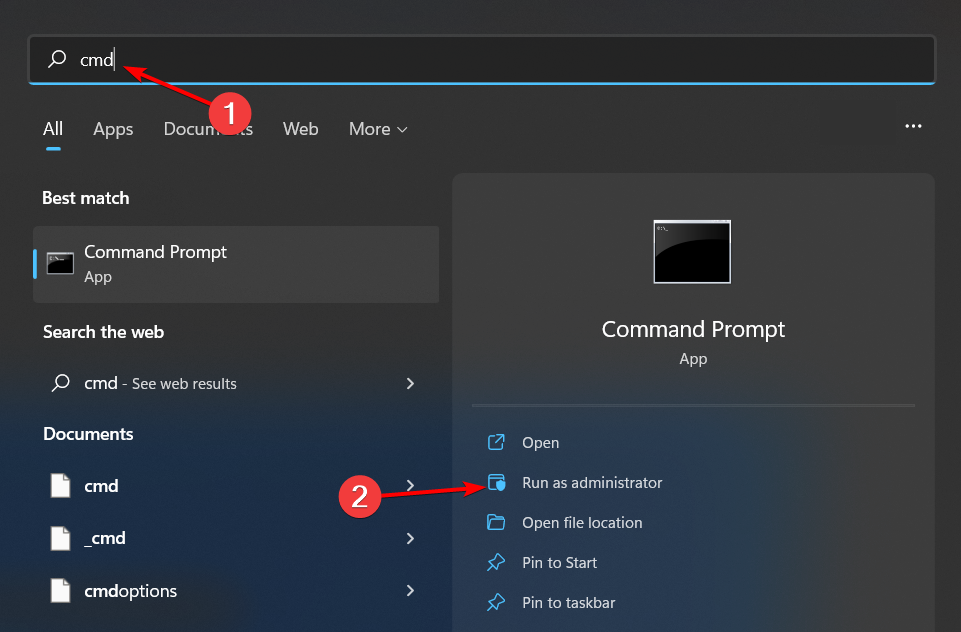
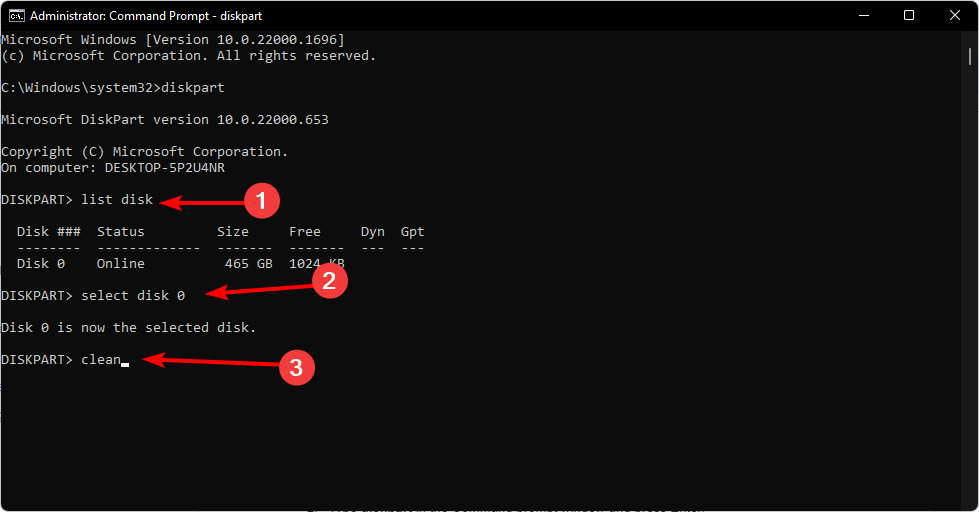
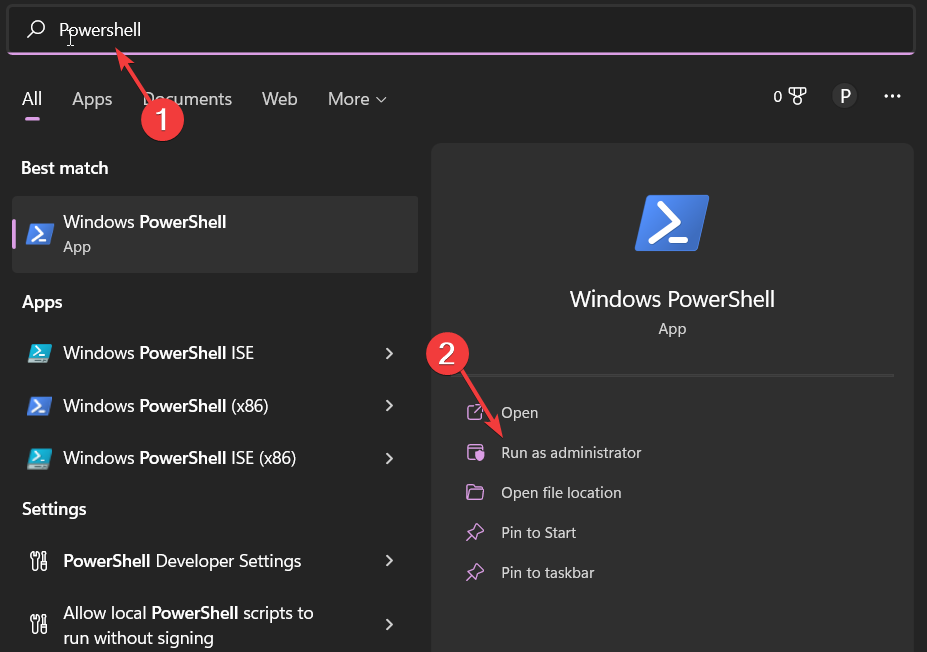
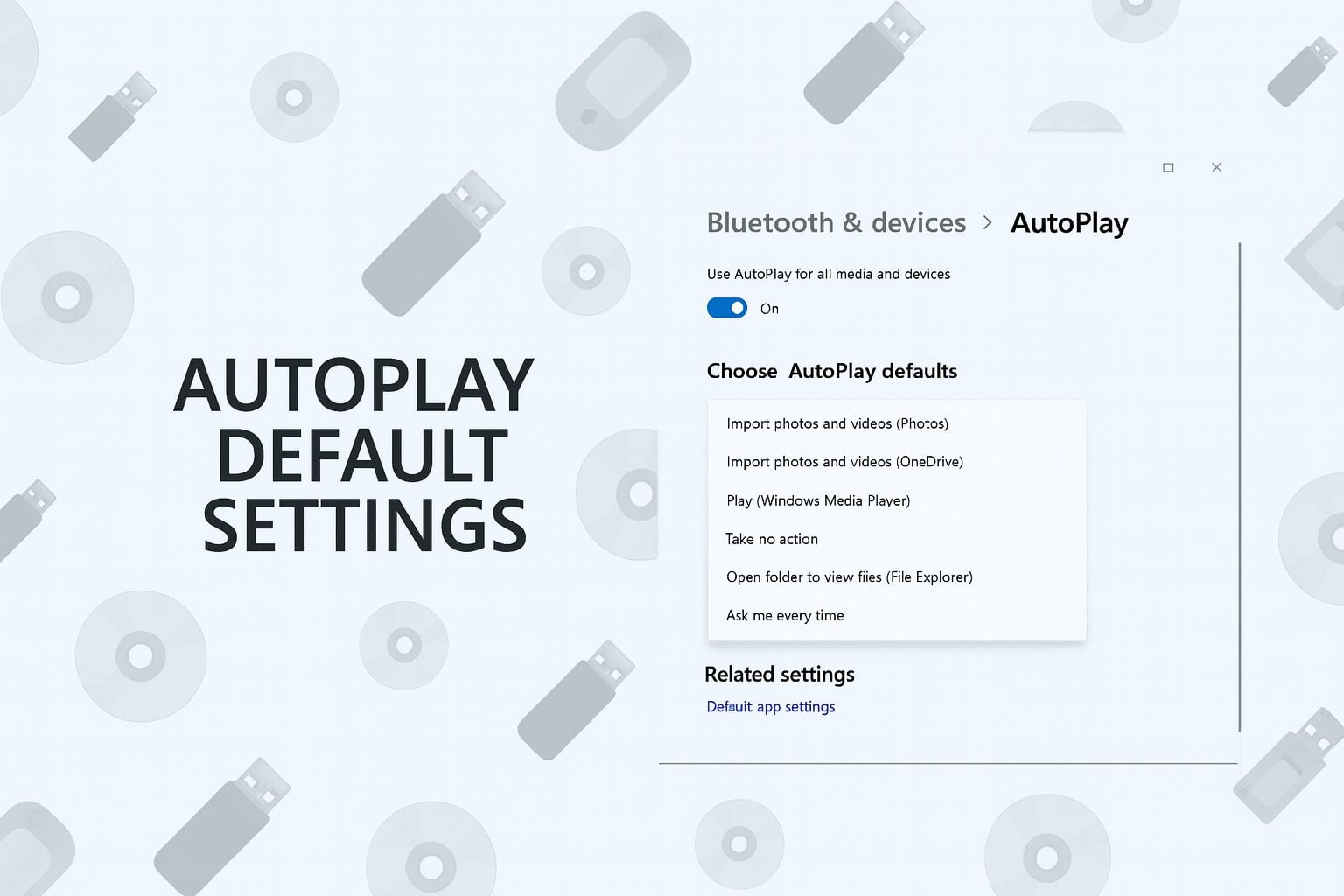
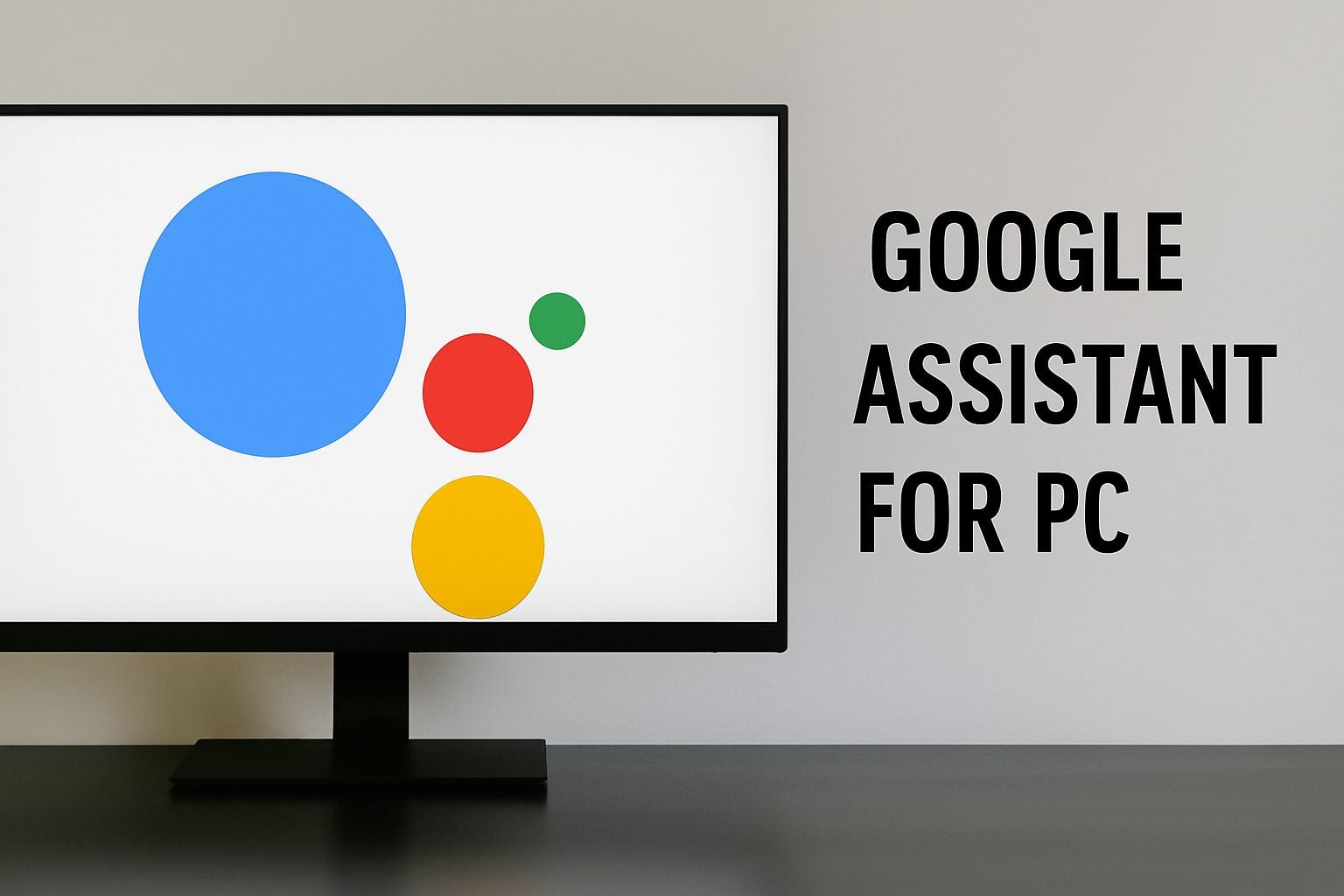

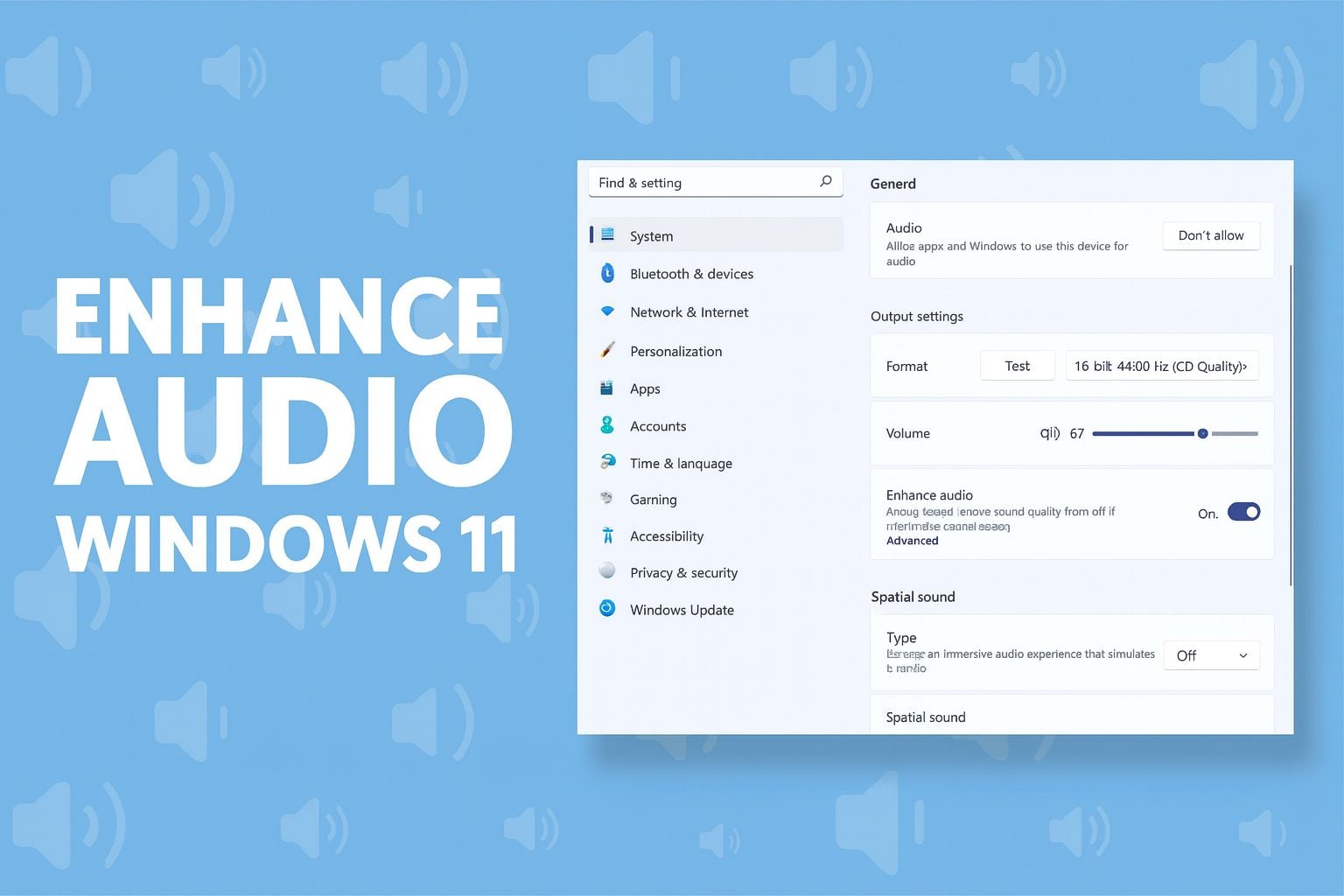
User forum
0 messages